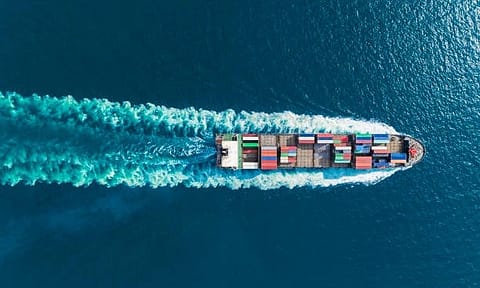Sea freight expenses may soften in fiscal 2026
Domestic shipping companies are likely to see their declining revenue trend continue, with year-on-year dip of 8-10% in fiscal 2026

Sea freight expenses may come down as charter rates are likely to soften in fiscal 2026. Domestic shipping companies are likely to see their declining revenue trend continue, with year-on-year dip of 8-10% in fiscal 2026, on account of softening charter rates for crude oil and petroleum products amid stagnant demand and a moderation in dry bulk carriers following fleet additions, says CRISIL Ratings.
The research agency says revenue and margins, which declined last fiscal, continue to slide in the current fiscal for shipping companies after a robust 35% growth in fiscal 2023. Charter rates had surged as a result of disruption in global sea-borne trade caused by the Russia-Ukraine confrontation and pent-up demand after the pandemic. However, a sharper decline in revenue is unlikely, since the overall tonne mileage remains healthy, owing to long-haul travel routes adopted by ships amid ongoing geopolitical conflicts, including the Red Sea crisis. Lower revenue will cause operating margin to fall to 32-34% next fiscal, down from over 40% last fiscal, Crisil said, based on a study of five shipping companies, which account for about half of the 20 million metric tonne deadweight tonnage (DWT) of shipping fleet in India.
“The current trend of softening in charter rates for crude and product tankers is likely to extend in the next fiscal, as global crude oil consumption is expected to grow a mere 1%, leading to an overall 8-10% year-on-year fall in revenue for shipping companies next fiscal. The continued rerouting of ships to avoid the Red Sea route would, however, result in higher tonne-miles. This, coupled with low addition to the shipping fleet, will prevent any steep decline in charter rates over the next 12-15 months,” says Ankit Kedia, director, CRISIL Ratings.
The fleets of domestic shipping companies are dominated by tankers that carry crude oil and clean petroleum products, accounting for 70% of the total DWT, followed by dry bulk carriers hauling unpackaged commodities such as coal, iron ore, and grains (20%). The balance is distributed among container ships, gas carriers, and others. Charter rates correlate with global demand-supply dynamics. While those for crude and petroleum product tankers began on a firm footing this fiscal, they moderated in the second quarter due to lower consumption, leading to an average 6% year-on-year decline in the first half. With this trend in rates expected to continue, the second half could see a steeper year-on-year decline, on a high base of the previous fiscal caused by the Red Sea crisis.
The average charter rate for dry bulk carriers had almost doubled during the first half of this fiscal on the back of growth in demand for key commodities, especially iron ore and coal (accounting for 40-45% of the global dry bulk trade) and higher tonne-mile outpacing fleet growth. The agency estimates that the operating margins of shipping companies are likely to see 400-500 basis points contraction to 35-37% this fiscal and further to 32-34% next fiscal as charter rates normalise. Nonetheless, margins would continue to be remunerative and ensure a comfortable low-to-mid-teen return on capital.
India’s goods exports have been in the slow lane over the last two years, amid a challenging global environment and India’s exports to emerging markets declining, though core exports faring well this fiscal, even as overall exports remain weak on account of a contraction in petroleum and gems and jewellery exports.